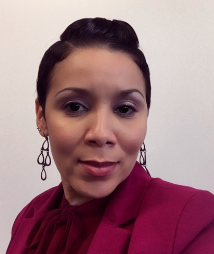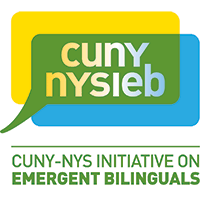CUNY-NYSIEB Ambassador: Hulda Yau
(Dual Language Bilingual Education Teacher)Meet Hulda….
 Hulda Yau has been working for the Rochester City School District (RCSD) since 2003. She is currently a 2nd-grade bilingual teacher in a one-way dual language bilingual integrated classroom, where she has pioneered techniques that leverage her students’ language backgrounds as resources in their learning.
Hulda Yau has been working for the Rochester City School District (RCSD) since 2003. She is currently a 2nd-grade bilingual teacher in a one-way dual language bilingual integrated classroom, where she has pioneered techniques that leverage her students’ language backgrounds as resources in their learning.
Hulda holds a Master of Science in Education from the State University of New York at Brockport and has New York State certificates in the areas of PreK-6, Spanish 7-12, and Bilingual Education Extension. She is the co-author of one of the case study chapters in Translanguaging with Multilingual Students: Learning from Classroom Moments edited by Ofelia Garcia and Tatyana Kleyn. Hulda has worked with CUNY-NYSIEB since 2014 and through this collaboration has presented on Translanguaging at the New York State Association for Bilingual Education (NYSABE) conference and for teachers in NYC and RCSD. She is the Assistant Editor of the NYSABE newsletter and a member of the Learning A-Z Dual Language and Bilingual Advisory Board. Hulda is presently writing a children’s book inspired by her students’ translanguaging practices in the classroom.
Take a Peek in Hulda’s Classroom
Fast Facts
- Type of Classroom: Dual Language Spanish-English Bilingual second grade classroom
- Model: Ms. Yau works together with a bilingual co-teacher, given that her classroom serves students receiving special education services.
- Flexible language use: In addition to spaces where mostly English and Spanish are used, the teachers open up intentional translanguaging spaces where students can use all of their language resources to make meaning.
Working on Idiomatic Expressions
In the following video, students are working on idioms, “expresiones idiomáticas.” The first group needs a translanguaging lifesaver ring, meaning, students would benefit from discussing idioms in Spanish prior to defining and discussing them in English. The second group has the English language features needed to begin the discussion in English and then make the connection to Spanish.
Deconstructing a Compound Sentence
In the following video, the students begin the lesson by deconstructing a compound sentence in English. Hulda uses translanguaging as a bridge to connect their new language to their home language by having students deconstruct compound sentences, “oraciones compuestas,” in Spanish.
Bilingual Vocabulary Development
In the following video students will be reading the story “Una visita al acuario” in Spanish while the book is simultaneously displayed in English on the smartboard. This enables students to make connections between words they might not know in Spanish (like “protuberancia”) and words they know in English (“bumpy”), among others. Hulda uses this translanguaging strategy as an opportunity for both Spanish and English language development.
“Nuestro rinconcito bilingue”
In the following video, Hulda showcases what she calls a “translanguaging transformational space,” an activity where students students are invited to use all of their language resources to engage in vocabulary inquiry across languages. Students receive resources that display each word side by side as seen below.


Throughout the lesson, students take a deep dive into these topics:
• Cognates (delicious, delicioso)
• Synonyms (estambre, hilo)
• Descriptive language (chunks of wool, pedazos de lana)
• Base word, root word (colorful)
• Comprehension strategies
• Singular, plural (canasta, baskets)
• Sentence construction
Hulda on Translanguaging Pedagogy
In this webinar from 2016, Hulda speaks with Dr. Ofelia García about her experiences implementing translanguaging pedagogy in her one-way dual language bilingual classroom.
